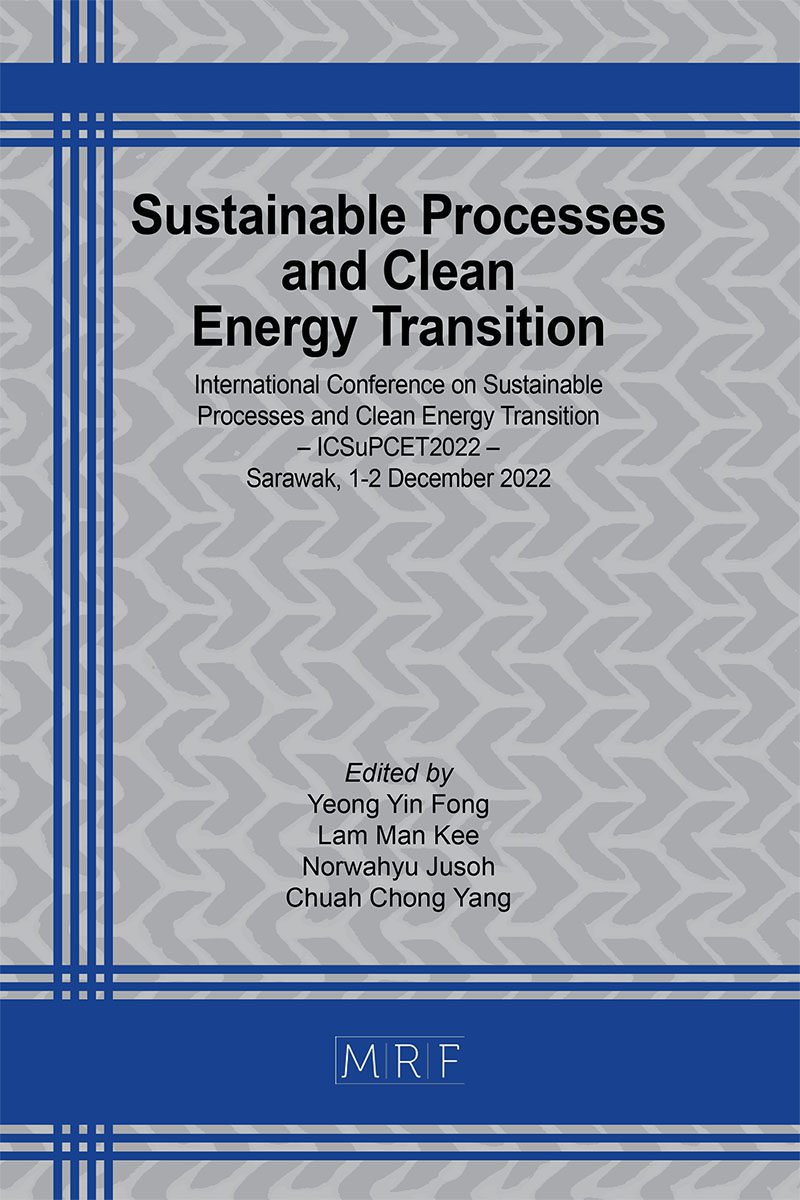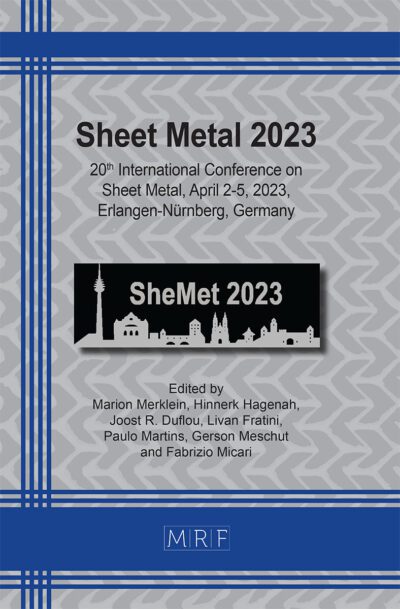Modelling Malaysia’s energy transition pathways: the role of renewable energy policy measures
KAZEEM ALASINRIN Babatunde, MOAMIN A Mahmoud, NAZRITA Ibrahim, FATHIN FAIZAH Said
download PDFAbstract. Coal’s rising prominence in the power industry has raised concerns about future CO2 emissions and energy reliability. As of 2017, it is estimated that Malaysia’s existing natural gas production can only be maintained for another 40 years. Consequently, the carbon intensity of electricity production has increased due to the increasing share of coal-fired plants and electricity infrastructure inefficiencies. To sum it up, energy industries were the highest emitters of CO2 emissions, with a 54 percent share. In response to these challenges, the government implemented series of Renewable Energy (RE) policy measures. Whether these policies are sufficient in driving Malaysian energy decarbonization is yet to be answered. In the study, we simulate different scenarios from 2015 to 2050 with an agent-based model to explore the roles of renewable energy policies toward emission reduction in the energy sector. The simulation results reveal that when all renewables initiatives were implemented, the share of RE increased to 16 percent, and emissions intensity fell by 26 percent relative to its level in 2005, albeit with increasing absolute carbon emissions. This milestone is still far below the government’s 45 percent reduction target. The simulation results demonstrated that renewable energy policies alone are less effective in driving Malaysian electricity toward desired low-carbon pathways. Furthermore, it is evidenced that no single policy can achieve the emission reduction target. Therefore, a combination of energy efficiency and renewable energy policy measures is unavoidable to decarbonize the electricity sector in Malaysia.
Keywords
Agent-Based Model, Electricity Sector, Renewable Energy Policies, Energy Decarbonization, Simulation
Published online 5/20/2023, 9 pages
Copyright © 2023 by the author(s)
Published under license by Materials Research Forum LLC., Millersville PA, USA
Citation: KAZEEM ALASINRIN Babatunde, MOAMIN A Mahmoud, NAZRITA Ibrahim, FATHIN FAIZAH Said, Modelling Malaysia’s energy transition pathways: the role of renewable energy policy measures, Materials Research Proceedings, Vol. 29, pp 500-508, 2023
DOI: https://doi.org/10.21741/9781644902516-57
The article was published as article 57 of the book Sustainable Processes and Clean Energy Transition
![]() Content from this work may be used under the terms of the Creative Commons Attribution 3.0 license. Any further distribution of this work must maintain attribution to the author(s) and the title of the work, journal citation and DOI.
Content from this work may be used under the terms of the Creative Commons Attribution 3.0 license. Any further distribution of this work must maintain attribution to the author(s) and the title of the work, journal citation and DOI.
References
[1] V. Ahlqvist, P. Holmberg, T. Tangerås, A survey comparing centralized and decentralized electricity markets, Energy Strateg. Rev. 40 (2022). https://doi.org/10.1016/j.esr.2022.100812
[2] S. Ahmad, R.M. Tahar, Selection of renewable energy sources for sustainable development of electricity generation system using analytic hierarchy process: A case of Malaysia, Renew. Energy. 63 (2014) 458–466. https://doi.org/10.1016/j.renene.2013.10.001
[3] M. Kalkuhl, O. Edenhofer, K. Lessmann, Renewable energy subsidies: Second-best policy or fatal aberration for mitigation?, Resour. Energy Econ. 35 (2013) 217–234. https://doi.org/10.1016/j.reseneeco.2013.01.002
[4] C. Chong, W. Ni, L. Ma, P. Liu, Z. Li, The use of energy in Malaysia: Tracing energy flows from primary source to end use, Energies. 8 (2015) 2828–2866. https://doi.org/10.3390/en8042828
[5] S. S.A., N.A. Omar, M.S. Bin Ahmad, H.R. Siddiquei, S. Mohd. Nor, Renewable Energy in Malaysia: Strategies and Development, Environ. Manag. Sustain. Dev. 2 (2013) p51-66. https://doi.org/10.5296/emsd.v2i1.3197
[6] M.J. Pickl, The renewable energy strategies of oil majors – From oil to energy?, Energy Strateg. Rev. 26 (2019) 100370. https://doi.org/10.1016/j.esr.2019.100370
[7] G. Falchetta, A. Adeleke, M. Awais, E. Byers, P. Copinschi, S. Duby, A. Hughes, G. Ireland, K. Riahi, S. Rukera-Tabaro, F. Semeria, D. Shendrikova, N. Stevanato, A. ́e Troost, M. Tuninetti, A. Vinca, A. Zulu, M. Hafner, A Research Agenda for Planning and Financing Nexus Development Objectives in Rural Sub-Saharan Africa, Renew. Stategy Rev. 43 (2022). https://doi.org/10.2139/ssrn.4024065
[8] IEA, Renewables 2021: Analysis and forecast to 2026, Int. Energy Agency Publ. Int. (2021) 167. www.iea.org/t&c/%0Ahttps://webstore.iea.org/download/direct/4329
[9] EIA, Annual Energy Outlook 2018 with projections to 2050, Washington, D.C., 2018. https://doi.org/DOE/EIA-0383(2012) U.S
[10] U. Bhattarai, T. Maraseni, A. Apan, Assay of renewable energy transition: A systematic literature review, Sci. Total Environ. 833 (2022) 155159. https://doi.org/10.1016/J.SCITOTENV.2022.155159
[11] K.A. Babatunde, F.S. Fathin, M.N. Nor Ghani, A.B. Rawshan, Reducing Carbon Dioxide Emissions from Malaysian Power Sector: Current Issues and Future Directions, J. Kejuruter. 1 (2018) 59–69.
[12] S. Zaman, Z. Wang, S.F. Rasool, Q. uz Zaman, H. Raza, Impact of critical success factors and supportive leadership on sustainable success of renewable energy projects: Empirical evidence from Pakistan, Energy Policy. 162 (2022) 112793. https://doi.org/10.1016/j.enpol.2022.112793
[13] K.A. Babatunde, F.F. Said, N.G. Md Nor, R.A. Begum, M.A. Mahmoud, Coherent or conflicting? Assessing natural gas subsidy and energy efficiency policy interactions amid CO2 emissions reduction in Malaysia electricity sector, J. Clean. Prod. 279 (2021) 123374. https://doi.org/10.1016/j.jclepro.2020.123374
[14] F.F. Said, K.A. Babatunde, N.G.M. Nor, M.A. Mahmoud, R.A. Begum, Decarbonizing the Global Electricity Sector through Demand-Side Management: A Systematic Critical Review of Policy Responses, J. Ekon. Malaysia. 56 (2022) 71–91. https://doi.org/10.17576/JEM-2022-5601-06
[15] Ministry of Natural Resources and Environment, Malaysia Biennial Update Report to the United Nations Framework Convention on Climate Change (UNFCCC), Putrajaya, 2015. https://doi.org/10.1017/CBO9781107415324.004
[16] B.W.W. Ang, B. Su, Carbon emission intensity in electricity production: A global analysis, Energy Policy. 94 (2016) 56–63. https://doi.org/10.1016/j.enpol.2016.03.038
[17] S. Hinchliffe, R. V. Diemen, C. Heuberger, N. Macdowell, A Study on Transitions in Electricity Systems Towards 2030 Examining: Australia, China, India, Malaysia, Singapore, South Africa and the United Kingdom, 2015.
[18] B. Tranberg, O. Corradi, B. Lajoie, T. Gibon, I. Staffell, G.B. Andresen, Real-time carbon accounting method for the European electricity markets, Energy Strateg. Rev. 26 (2019). https://doi.org/10.1016/j.esr.2019.100367
[19] MESTECC, Third National Communication (TNC) and Biennial Update Report to the UNFCCC, Putrajaya, 2018. https://www.mestecc.gov.my/web/documents/jqhRxaP3ff20SNzCaBfiyqiOdsLhuBa9Jyz5D0C_gQ0
[20] É.J.L. Chappin, I. Nikolic, N. Yorke-Smith, Agent-based modelling of the social dynamics of energy end use, Elsevier Inc., 2020. https://doi.org/10.1016/B978-0-12-818567-4.00029-6
[21] E.J.L. Chappin, L.J. De Vries, J.C. Richstein, P. Bhagwat, K. Iychettira, S. Khan, Simulating climate and energy policy with agent-based modelling : The Energy Modelling Laboratory ( EMLab ), Environ. Model. Softw. 96 (2017) 421–431. https://doi.org/10.1016/j.envsoft.2017.07.009
[22] Mahmoud, M. A., Md Nasir, N. R., Gurunathan, M., Raj, P., & Mostafa, S. A. (2021). The current state of the art in research on predictive maintenance in smart grid distribution network: Fault’s types, causes, and prediction methods—a systematic review. Energies, 14(16), 5078.
[23] P. Hansen, X. Liu, G.M. Morrison, Agent-based modelling and socio-technical energy transitions: A systematic literature review, Energy Res. Soc. Sci. 49 (2019) 41–52. https://doi.org/10.1016/j.erss.2018.10.021
[24] X. Wang, K. Yang, Economic load dispatch of renewable energy-based power systems with high penetration of large-scale hydropower station based on multi-agent glowworm swarm optimization, Energy Strateg. Rev. 26 (2019) 100425. https://doi.org/10.1016/j.esr.2019.100425
[25] Mahmoud, M. A., Ahmad, M. S., Ahmad, A., Yusoff, M. Z. M., Mustapha, A., & Hamid, N. H. A. (2013, May). Obligation and Prohibition Norms Mining Algorithm for Normative Multi-agent Systems. In KES-AMSTA (pp. 115-124).
[26] , M. A., Ahmad, M. S., Ahmad, A., Mustapha, A., Yusoff, M. Z. M., & Hamid, N. H. A. (2013). Building norms-adaptable agents from potential norms detection technique (PNDT). International Journal of Intelligent Information Technologies (IJIIT), 9(3), 38-60.
[27] Mahmoud, M. A., Ahmad, M. S., Ahmad, A., Mohd Yusoff, M. Z., & Mustapha, A. (2011, July). Norms detection and assimilation in multi-agent systems: a conceptual approach. In Knowledge Technology Week (pp. 226-233). Springer, Berlin, Heidelberg.
[28] K.A. Babatunde, R.A. Begum, F.F. Said, Application of computable general equilibrium (CGE) to climate change mitigation policy: A systematic review, Renew. Sustain. Energy Rev. 78 (2017) 61–71. https://doi.org/10.1016/j.rser.2017.04.064
[29] M. Wooldridge, C. Street, M. Manchester, N.R. Jennings, Q. Mary, W. College, Intelligent Agents : Theory and Practice, Knowl. Eng. Revie. 10 (1995) 1–62.































